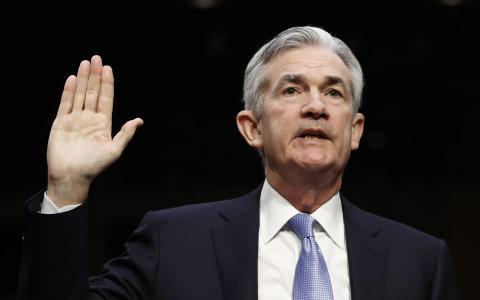
(Yahoo! Finance) - Troublesomely high inflation rates may have an overlooked metric at their source: soaring insurance costs. But don't take our word for it, just listen to Federal Reserve Chair Jerome Powell.
Several types of insurance, including home and car insurance, have surged over the past few years, and it’s hurting the Fed’s effort to get interest rates down to its 2% target, Powell said in congressional testimony last week.
“Insurance of various different kinds—housing insurance, but also automobile insurance, and things like that—that’s been a significant source of inflation over the last few years,” he said.
On Tuesday, data from the Bureau of Labor Statistics showed that its metric for auto insurance, which covers physical damage, liability, and miscellaneous insurance coverage for private passenger vehicles, increased 20.6% over the past year and climbed 0.9% in February compared to the month prior. Meanwhile, a study from S&P Global Market Intelligence found that homeowners' insurance jumped 11.3% in 2023. Generally, inflation came in slightly higher than expected last month, at 3.2% compared to the same period last year, according to the BLS.
Driving the increases in insurance are factors such as climate change and rising prices for car parts, experts say.
The more frequent extreme weather caused by climate change is leading to higher risk for insurance companies, which has led them to increase their prices, according to a study from Bankrate. Over the past decade, the U.S. has experienced a record $1.1 trillion in damage from severe weather, the most on record, which has contributed to higher insurance costs, the study claimed.
Insurers pay reinsurance companies to help them avoid insolvency in the case of catastrophic weather events. But because of the increased likelihood of harsh weather conditions that can damage homes, reinsurance companies are charging insurance companies more for their services, and the insurers are passing on the costs to customers, according to Bankrate.
In some of the highest-risk areas, insurance companies have even stopped providing their services altogether.
“In the longer term, companies are withdrawing from writing insurance in some coastal areas,” Powell said, adding, “It’s a significant issue.”
Car insurance rates are also at a nearly 50-year high, according to the Bureau of Labor Statistics, and several factors are to blame including extreme weather and crime, but also the cars themselves, Mark Hamrick, Bankrate’s senior economic analyst, told Fortune.
"The road that’s led us to this place includes the sharp rise in the prices of new cars and their complexity, which makes repair more complicated and expensive,” Hamrick said in an email.
BLS data published Tuesday showed that motor vehicle maintenance and repair costs in U.S. cities increased 6.2% last month compared to a year earlier, outpacing inflation's year-over-year increase of 3.2%.
Although some of the effects of soaring interest rates are unavoidable, Hamrick said consumers can try to get a better deal by adjusting or shopping around for coverage and considering insurance costs when deciding on which car to buy.
Still, he added that the rising cost of insurance is really a losing situation for consumers.
"The sharp rise in auto insurance rates reflects a true collision of several challenging factors, all of which leave drivers in a less-than-optimal place: having to pay more than they expected for coverage."
This story was originally featured on Fortune.com
By Marco Quiroz-Gutierrez



